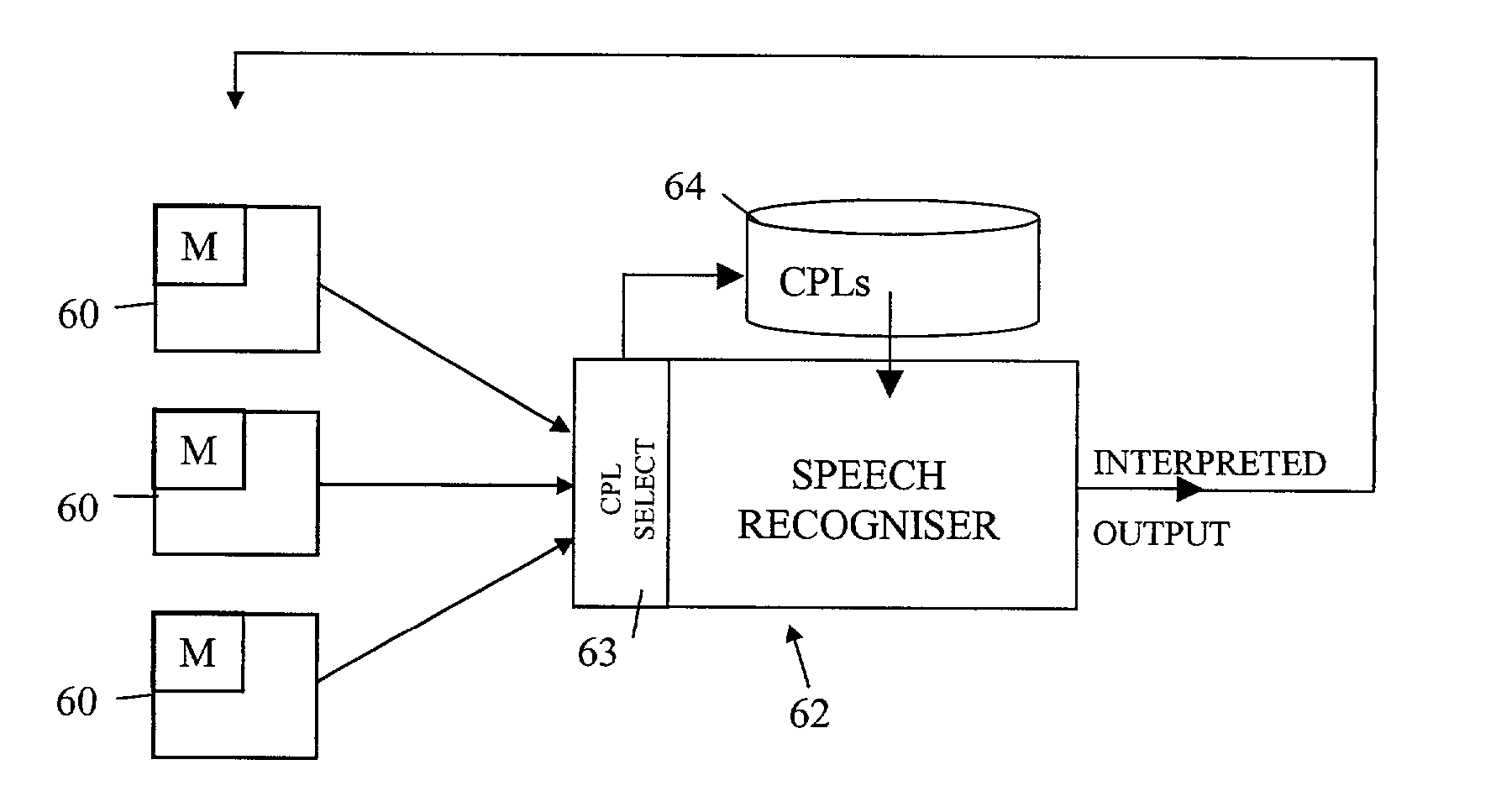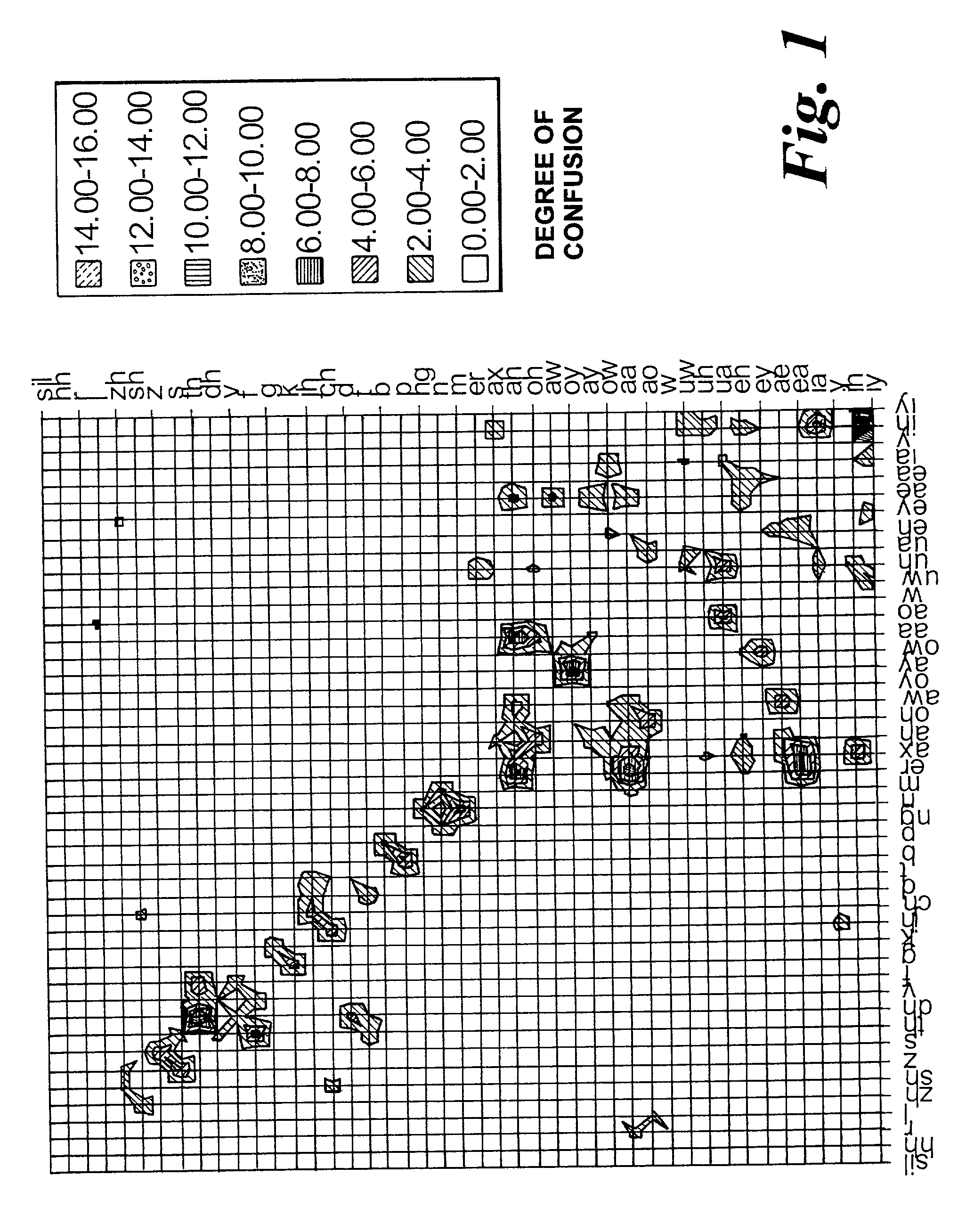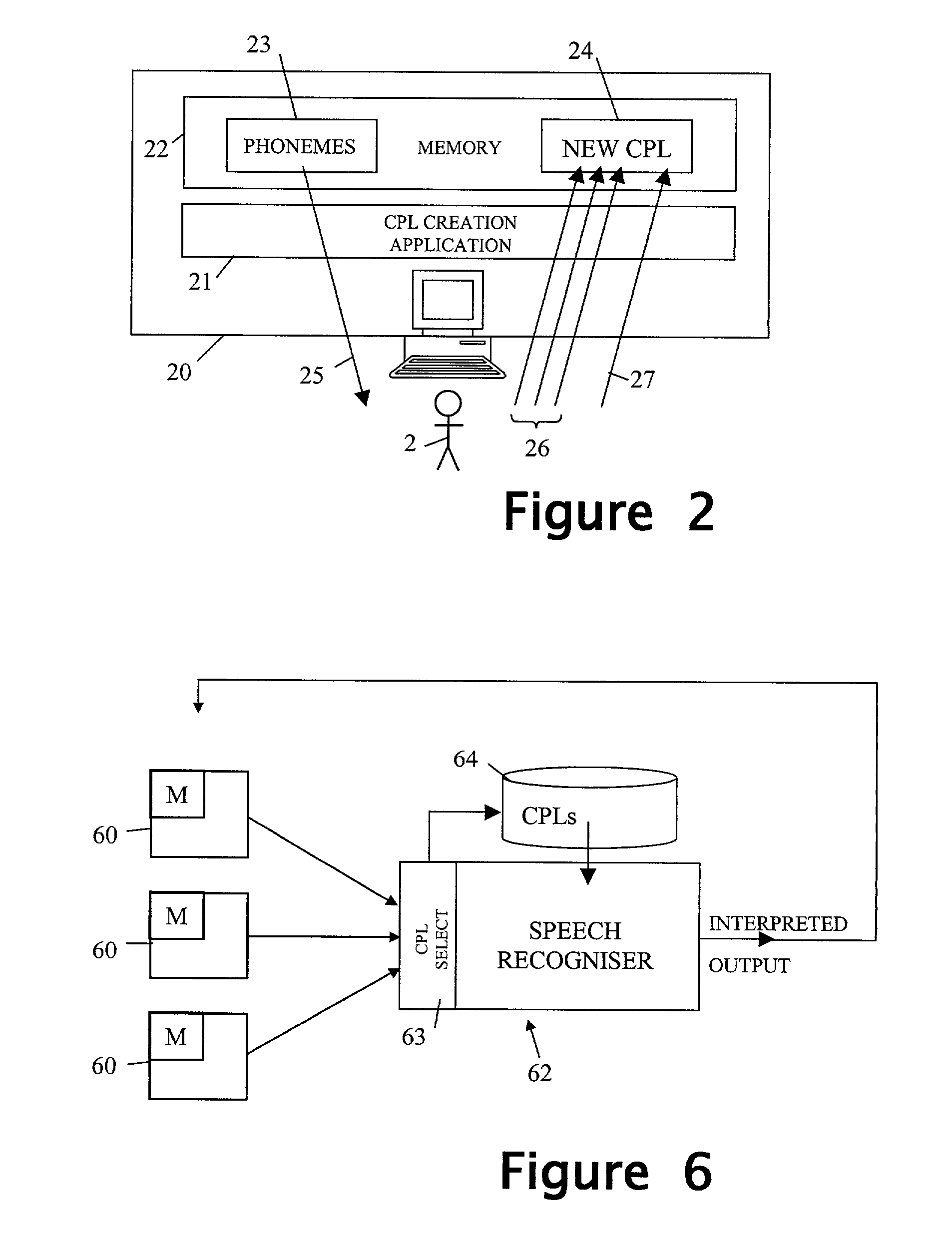Artificial language
a technology of artificial language and human language, applied in the field of artificial language, can solve the problems of high set up cost, difficult to train a computer in human language, and still suffer the same inadequacies and problems of the most advanced spoken language system in the best research groups in the world, so as to achieve low confusion risk, low confusion risk, and low confusion risk
- Summary
- Abstract
- Description
- Claims
- Application Information
AI Technical Summary
Benefits of technology
Problems solved by technology
Method used
Image
Examples
example
[0039] The following example of a simple CPL generated with reference to the FIG. 1 matrix using the process outlined above.
[0040] Consider the case of a simple telephone that can be controlled via a set of 16 CV words to perform the following actions.
[0041] Switch on
[0042] Switch off
[0043] Redial
[0044] Dial
[0045] Hangup
[0046] Answer
[0047] =0, . . . 9.
[0048] By looking at the FIG. 1 matrix, it is possible to find some phones that fit well together (i.e minimize the confusion) to produce these 16 words.
1 Switch on: [g ow] as in go Switch off: [s ow] as in so Answer [h aa 1 uw] as in ha loo Hangup [b aa] as in baa Dial [d ao d ao] as in dodo (o of born) Redial [r aa d ao d ao} as in raadodo. Zero [p ow p ow] as in popo One [n ow n ow} as in nono Two [t aa t aa] as in tata Three [g ao g ao] as in gogo Four [f ow f ow] as in fofo Five [f aa faa] as in fafa Six [s aa s aa] as in sasa Seven [s uw s uw] as in soosoo Eight [h ow h ow] as in hoho Nine [n aa n aa] as in nana
[0049] Whilst the...
PUM
 Login to View More
Login to View More Abstract
Description
Claims
Application Information
 Login to View More
Login to View More - R&D
- Intellectual Property
- Life Sciences
- Materials
- Tech Scout
- Unparalleled Data Quality
- Higher Quality Content
- 60% Fewer Hallucinations
Browse by: Latest US Patents, China's latest patents, Technical Efficacy Thesaurus, Application Domain, Technology Topic, Popular Technical Reports.
© 2025 PatSnap. All rights reserved.Legal|Privacy policy|Modern Slavery Act Transparency Statement|Sitemap|About US| Contact US: help@patsnap.com



